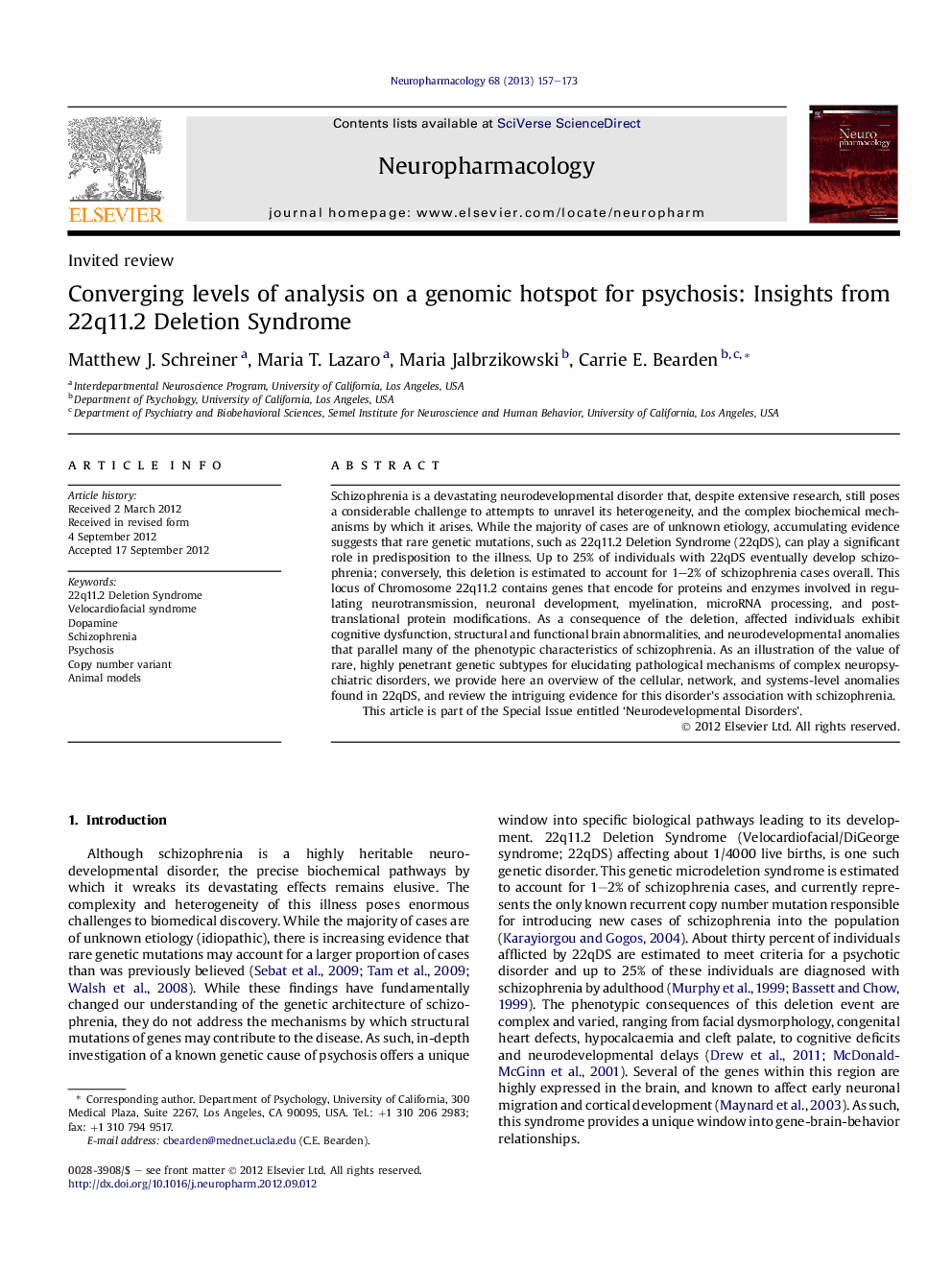| Article ID | Journal | Published Year | Pages | File Type |
|---|---|---|---|---|
| 2493492 | Neuropharmacology | 2013 | 17 Pages |
Schizophrenia is a devastating neurodevelopmental disorder that, despite extensive research, still poses a considerable challenge to attempts to unravel its heterogeneity, and the complex biochemical mechanisms by which it arises. While the majority of cases are of unknown etiology, accumulating evidence suggests that rare genetic mutations, such as 22q11.2 Deletion Syndrome (22qDS), can play a significant role in predisposition to the illness. Up to 25% of individuals with 22qDS eventually develop schizophrenia; conversely, this deletion is estimated to account for 1–2% of schizophrenia cases overall. This locus of Chromosome 22q11.2 contains genes that encode for proteins and enzymes involved in regulating neurotransmission, neuronal development, myelination, microRNA processing, and post-translational protein modifications. As a consequence of the deletion, affected individuals exhibit cognitive dysfunction, structural and functional brain abnormalities, and neurodevelopmental anomalies that parallel many of the phenotypic characteristics of schizophrenia. As an illustration of the value of rare, highly penetrant genetic subtypes for elucidating pathological mechanisms of complex neuropsychiatric disorders, we provide here an overview of the cellular, network, and systems-level anomalies found in 22qDS, and review the intriguing evidence for this disorder's association with schizophrenia.This article is part of the Special Issue entitled ‘Neurodevelopmental Disorders’.
► 22q11.2 Deletion Syndrome (22qDS) offers unique insights into biological pathways to psychosis. ► Adolescent brain dysmaturation may be relevant to illness onset in both 22qDS and idiopathic schizophrenia. ► Haploinsufficiency of neurodevelopmental genes likely underlies the psychiatric phenotype.
